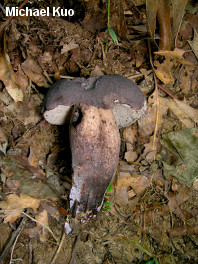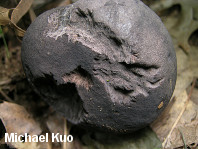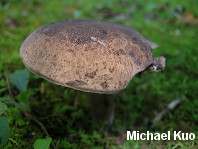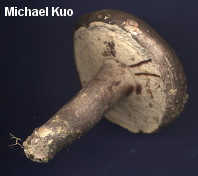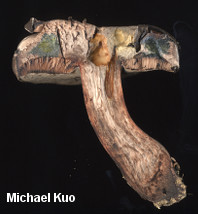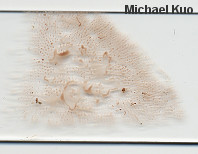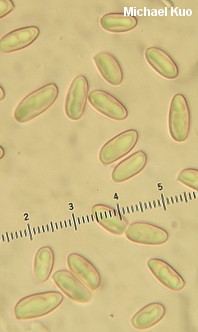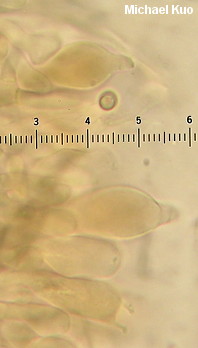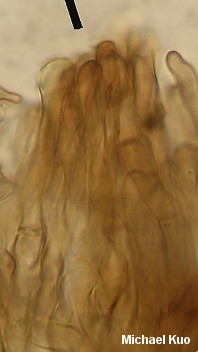| Major Groups > Boletes > Tylopilus > Tylopilus alboater |

|
Tylopilus alboater [ Basidiomycota > Boletales > Boletaceae > Tylopilus . . . ] by Michael Kuo This easy-to-recognize Tylopilus has a blackish, velvety cap and a dark, smooth stem. Its pore surface is initially white; later it becomes pinkish and bruises promptly red, then black. It has a mild taste, unlike the many bitter Tylopilus species, and its flesh turns pink, then slowly grayish on exposure to air. It is mycorrhizal with oaks in eastern North America. Older specimens with cracked cap surfaces can appear a bit like Tylopilus sordidus, but the latter species is not as dark and has flesh and surfaces that turn blue when bruised, along with larger spores. Description: Ecology: Mycorrhizal with oaks; growing alone or scattered; summer and fall; widely distributed east of the Rocky Mountains. The illustrated and described collections are from Illinois. Cap: 4–9.5 cm across; convex, becoming broadly convex; dry; velvety; blackish brown to dark grayish brown or black; bruising black; sometimes becoming finely cracked with age. Pore Surface: Whitish when young, becoming pinkish; bruising red, then brown to black—or directly black, without a red stage; pores circular to angular, 2 per mm; tubes to 1 cm deep. Stem: 5–7 cm long; 1.5–2 cm thick; more or less equal, or enlarging towards base; dry; bald; whitish to pinkish near the apex, but colored like the cap (or paler) below; not reticulate, or merely finely reticulate near the apex; bruising dark blackish brown to black where handled. Flesh: Thick and white; discoloring pinkish when sliced, then turning slowly grayish; black in the stem base. Odor and Taste: Odor not distinctive, or sometimes foul; taste not distinctive. Chemical Reactions: Ammonia negative to black on cap; negative on flesh. KOH red to black on cap; salmon to negative on flesh. Iron salts negative to greenish on cap; blue to blue-green on flesh. Spore Print: Pink. Microscopic Features: Spores 8–11.5 x 3.5–5 µm; long-ellipsoid to subfusiform; smooth; hyaline to yellowish in KOH. Hymenial cystidia 25–42.5 x 7.5–12.5 µm; widely fusiform, with a small mucro; smooth; thin-walled; brownish to brown in KOH; often contrasting conspicuously with hyaline basidia and basidioles. Pileipellis a trichoderm of septate elements 5–7.5 µm wide, brown in KOH, often slightly encrusted; terminal cells with subcapitate or merely rounded apices. REFERENCES: (Schweinitz, 1822) Murrill, 1909. (Saccardo, 1888; Coker & Beers, 1943; Singer, 1947; Snell & Dick, 1970; Smith & Thiers, 1971; Smith, Smith & Weber, 1981; Weber & Smith, 1985; Phillips, 1991/2005; Lincoff, 1992; Both, 1993; Bessette, Roody & Bessette, 2000; Roody, 2003; Miller & Miller, 2006; Kuo, 2007; Binion et al., 2008; Kuo & Methven, 2014.) Herb. Kuo 07230308, 09300301, 07230402, 07270401, 07160702. This site contains no information about the edibility or toxicity of mushrooms. |
© MushroomExpert.Com |
|
Cite this page as: Kuo, M. (2016, January). Tylopilus alboater. Retrieved from the MushroomExpert.Com Web site: http://www.mushroomexpert.com/tylopilus_alboater.html |
